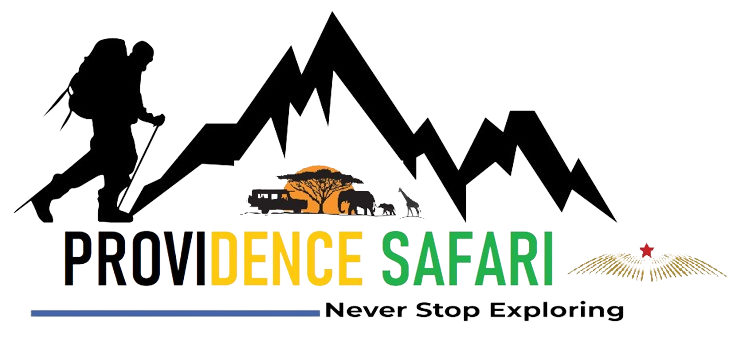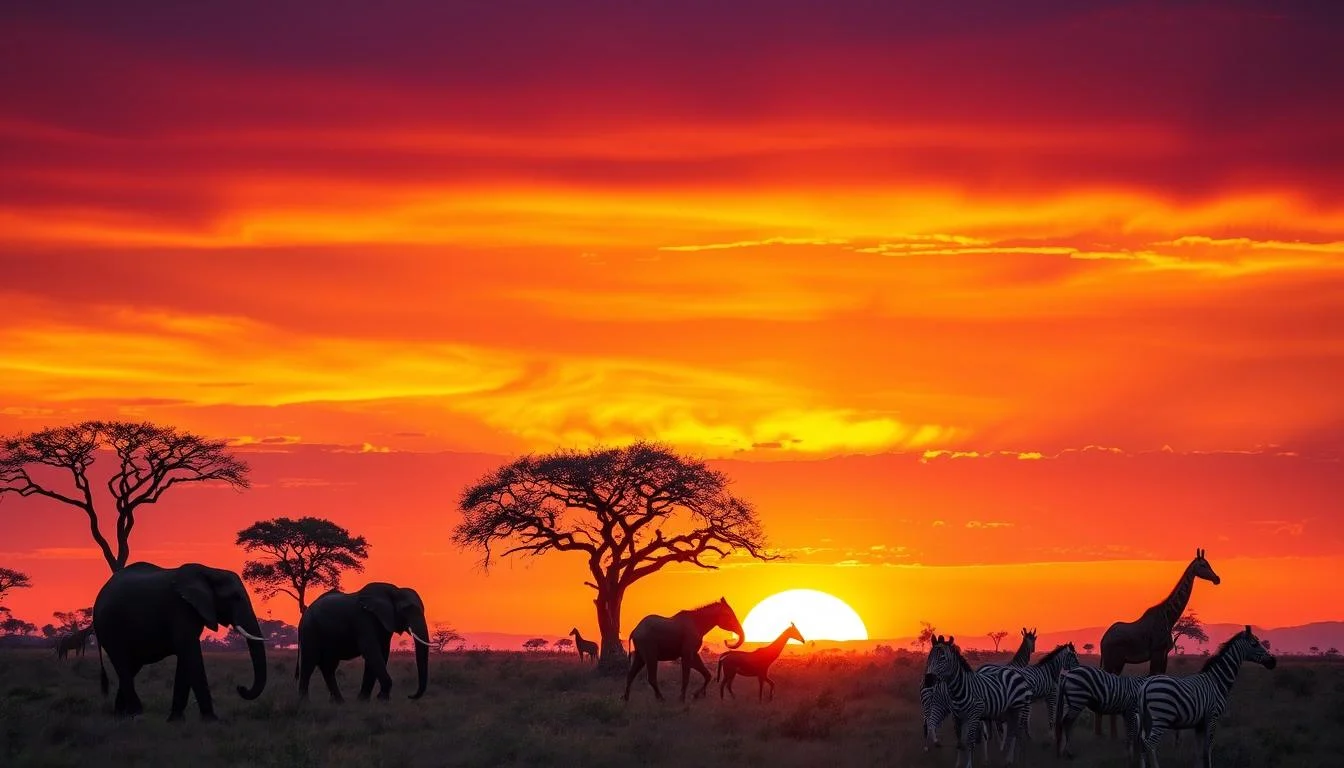Tanzania, the land of extraordinary wildlife and breathtaking landscapes, offers visitors an unparalleled safari experience year-round. However, the optimal time to visit can vary depending on your specific interests and preferences1. From witnessing the famous Wildebeest Migration to spotting newborn baby animals and enjoying favourable weather conditions, this guide will explore the best time to visit Tanzania for the ultimate safari adventure.
Tanzania’s diverse landscapes, wildlife, and natural events showcase a remarkable seasonal tapestry, and understanding these patterns can help you plan the perfect Tanzania safari1. Whether you’re seeking the perfect weather, the best wildlife sightings, or a more budget-friendly experience, this guide will provide you with the insights to make the most of your Tanzanian safari.
Key Takeaways
- Tanzania offers an exceptional safari experience year-round, but the best time to visit depends on your specific interests and preferences.
- Understanding the seasonal patterns and highlights in Tanzania can help you plan the ultimate safari adventure.
- From the Wildebeest Migration to newborn baby animals and favourable weather conditions, there are various factors to consider when choosing the best time to visit Tanzania.
- This guide will provide you with valuable insights to make the most of your Tanzanian safari, whether you’re seeking the perfect weather, the best wildlife sightings, or a more budget-friendly experience.
- Tanzania’s diverse landscapes, wildlife, and natural events showcase a remarkable seasonal tapestry, making it a destination that offers something special year-round.
Tanzania’s Safari Seasons
Tanzania experiences two distinct safari seasons – the dry season and the green season. The best time for a safari in Tanzania is from June to2, with the dry season offering excellent wildlife viewing opportunities from June to October2. During this time, the landscape is less dense, making wildlife more visible, and the weather is mild and sunny. Temperatures range from an average of 25°C to 30°C (77°F to 86°F) in the northern safari circuit and 30°C to 35°C (86°F to 95°F) in the southern and western regions.
Dry Season (June to October)
The dry season, lasting from June to October, is considered the peak time for safari in Tanzania2. During this period, the Mara River crossing spectacle occurs in June-July2, offering a thrilling wildlife encounter. Temperatures are mild, and the clear skies make it easier to spot animals, with less mosquito activity3.
Green Season (November to May)
The green season, from November to May, provides a more secluded safari experience4. January and February offer fewer vehicles and greener landscapes after the short rains2, while March and May experience heavy rain showers causing travel disruption2. Despite the challenges, this season offers the opportunity to witness the wildebeest calving in the southern Serengeti3.
| Season | Advantages | Disadvantages |
|---|---|---|
| Dry Season (June to October) |
|
|
| Green Season (November to May) |
|
|
Timing the Great Migration
The iconic Tanzania wildebeest migration safari is a natural marvel that captivates wildlife enthusiasts worldwide. This annual movement of millions of wildebeest, zebra, and Thomson’s gazelle follows a well-established pattern, though the precise timing can vary due to seasonal factors5.
January to March: Calving Season in the Southern Serengeti
During the calving season, the wildebeest herds congregate in the southern Serengeti and westernmost regions of the Ngorongoro Conservation Area. Over 80% of fertile female wildebeest drop their calves within a few weeks, resulting in a staggering 500,000 newborn wildebeests on the plains6. This concentration of vulnerable calves attracts a host of predators, providing thrilling wildlife viewing opportunities for safari-goers5.
June to July: The Herds Move North into the Western Corridor
As the dry season sets in, the wildebeest begin their northward trek, moving through the central Serengeti. By June, large concentrations of the herd can be observed on the southern banks of the Grumeti River in the Western Serengeti6. This is a prime time to witness the animals as they prepare to face the challenges of the dramatic river crossings that lie ahead.
August to October: The Dramatic River Crossings
The most iconic and perilous phase of the Tanzania wildebeest migration safari is the series of river crossings. The herd faces the daunting task of crossing the Grumeti River in July and the Great Mara River in August and October, with crocodiles and predators lying in wait67. The timing of these crossings can vary depending on rainfall patterns, but the best opportunities to witness these dramatic events are typically in July, August, and October5.
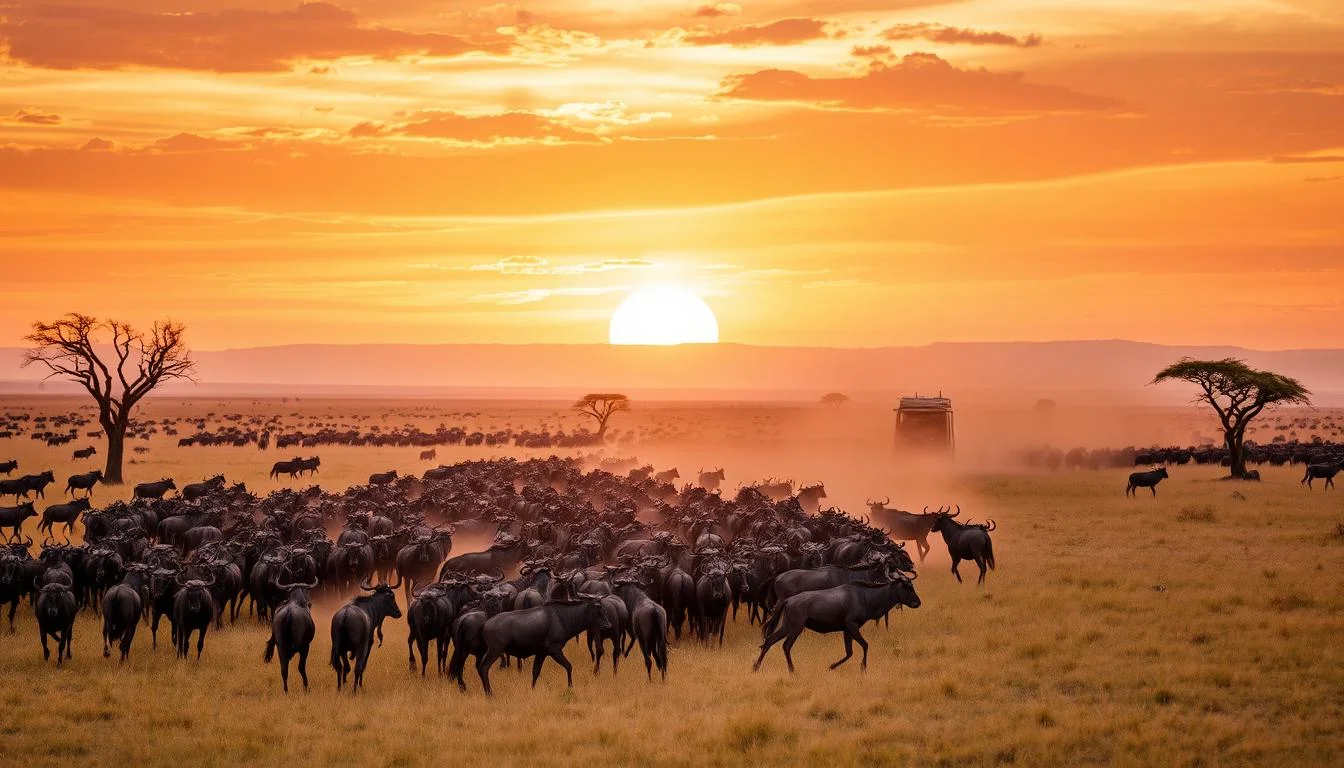
Coordinating your Tanzania safari to coincide with the different stages of the Great Migration can ensure an unforgettable wildlife experience. By working with a knowledgeable travel planner or tour operator, you can secure optimal viewing locations and increase your chances of witnessing this natural spectacle in all its glory7.
best time for safari in tanzania
Planning the perfect safari in Tanzania requires consideration of various factors, including the wildlife events, weather conditions, and personal preferences8. The best time to visit Tanzania for the Great Migration experience is between July and September, with many tourists flocking to witness wildebeest and zebra crossings8. Tanzania’s ‘green season’ for birdwatching falls between November and March8, while April and May are generally avoided due to heavy rains disrupting wildlife viewing8.
According to the data, July to October is highlighted as the best time for visiting Tanzania due to dry weather and excellent wildlife sightings89. In January, the migration herds are usually in the southeast of the Serengeti for calving season8, and Tanzania’s Green Season (November to March) is ideal for birdwatching with migratory birds arriving in large numbers89.
| Season | Best Time for |
|---|---|
| Dry Season (June to October) | Prime time for safari, with excellent wildlife viewing89 |
| Green Season (November to May) | Calving season in the Serengeti, birdwatching8 |
Ultimately, the best time for your Tanzania safari will depend on your priorities and the experiences you hope to have8. Whether you’re seeking the thrill of the Great Migration, the beauty of migratory birds, or the tranquillity of the Green Season, Tanzania offers a wealth of opportunities for the discerning traveller9.
Baby Animal Bonanza
One of the most exhilarating times to visit Tanzania is during the calving season, which typically occurs in the southern Serengeti from January to March. During this period, over 400,000 wildebeest calves are born each day, attracting a large number of predators such as lions, cheetahs, and hyenas10. This “baby animal bonanza” provides incredible opportunities to witness the circle of life, as predators hunt the vulnerable newborns, and the young animals take their first wobbly steps10.
The synchronized birthing of approximately a million wildebeest during this period is a survival strategy aimed at overwhelming predators with choices10. A significant number of wildebeest calves are usually born within a compact timeframe of three to six weeks, starting from early February10. Baby zebras, known as foals, are also a common sight during this time and are typically born individually after a year-long gestation10. These baby zebras have a unique stripe pattern at birth, which starts off as brown and gradually darkens as they grow10.
The calving usually takes place in the early morning to allow the newborns to acclimate to their surroundings and gain steadiness before nightfall when predators become active10. As the season progresses and resources diminish, the herds gradually move west and northwards10. Some recommended lodges in strategically located areas during this period include Lake Masek Tented Camp, Pioneer Camp, as well as mobile camps like Kichakani and Lemala Ndutu10.
The Serengeti National Park offers a picturesque backdrop for this spectacle, with its lush, green landscape providing excellent photographic conditions10. Witnessing the “baby animal bonanza” during the best time for tanzania safari11, which is typically from late January to early March, is an unforgettable experience that safari enthusiasts won’t want to miss11.
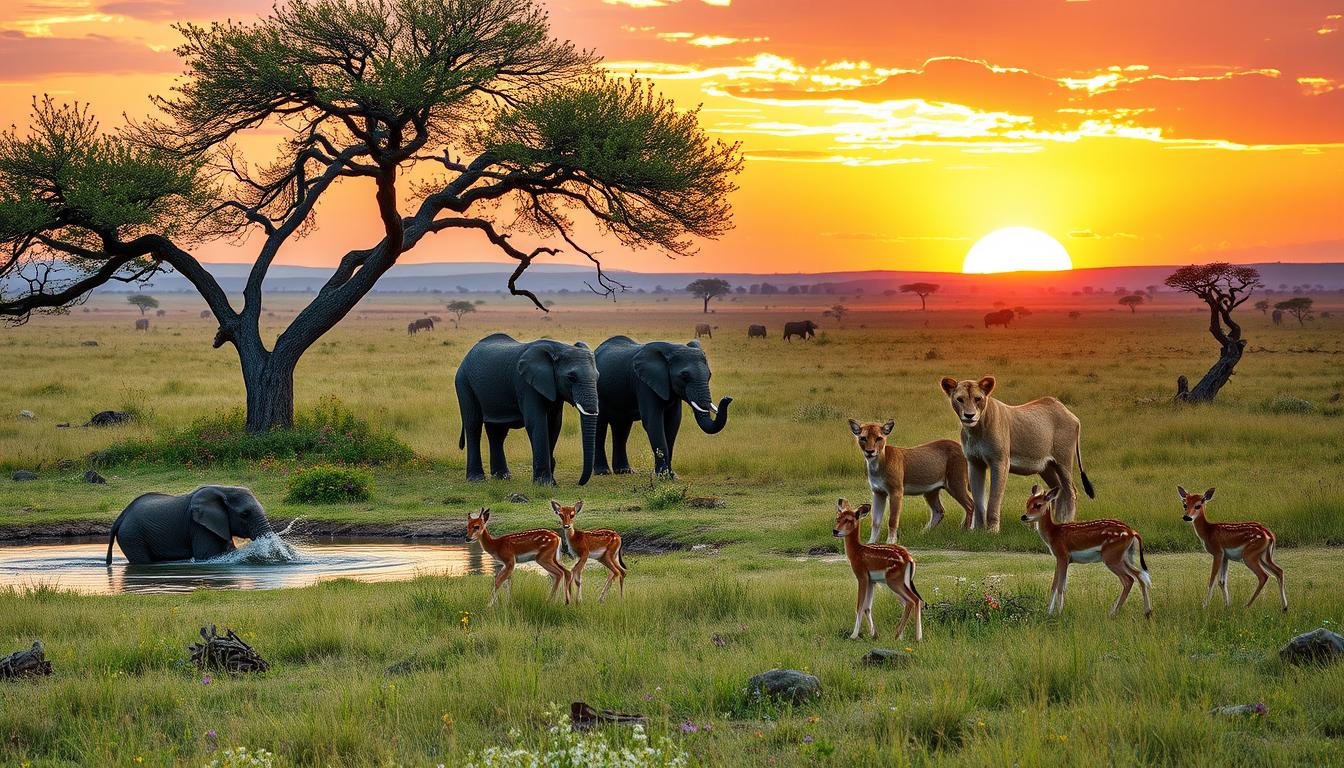
Exploring Tanzania’s National Parks
Tanzania is home to some of the most renowned national parks in Africa, each offering a unique safari experience. The country’s well-travelled northern safari circuit includes the Serengeti, Ngorongoro Crater, and Lake Manyara national parks, known for having the highest concentrations of big game in Africa12. Visitors can expect to witness the dramatic annual wildebeest migration, observe the diverse wildlife, and explore the parks’ diverse habitats, from the vast open plains to the acacia-dotted savannahs.
Serengeti National Park
The Serengeti National Park is Tanzania’s flagship park, renowned for its high concentration of wildlife and the dramatic annual wildebeest migration. The park’s diverse habitats provide excellent opportunities to spot the Big Five and other iconic species throughout the year12. The dry months (June to October) are recommended for exploring the Serengeti, as animals congregate around water sources12. The annual migration involves high-season river crossings in the northern Serengeti from July to October, calving season in the southern plains from approximately December to March, and rutting season in the central Serengeti from April to June12.
Ngorongoro Crater
The Ngorongoro Crater is a natural wonder, offering a unique safari experience. This collapsed volcanic caldera is a haven for thousands of zebra, wildebeest, and predators like lions and black rhinos12. The crater’s diverse landscape, including grasslands, forests, and a soda lake, provides an ideal habitat for a wide range of wildlife. The dry months (June to October) are recommended for exploring the Ngorongoro Crater, as animals congregate around water sources12.
| National Park | Highlights | Best Time to Visit |
|---|---|---|
| Serengeti National Park | High concentration of wildlife, annual wildebeest migration | June to October |
| Ngorongoro Crater | Diverse landscape, concentrations of zebra, wildebeest, and predators | June to October |
| Ruaha National Park | Larger than the Serengeti, fewer visitors | Year-round |
| Nyerere (formerly Selous) National Park | Ideal for walking safaris | Year-round |
Tanzania’s national parks offer a diverse range of safari experiences, from the vast Serengeti to the unique Ngorongoro Crater. Visitors can expect to witness a wealth of wildlife, including the iconic Big Five, and explore the parks’ diverse habitats throughout the year1213.
Combining Safari and Beach
Tanzania’s diverse offerings make it an ideal destination for an unforgettable blend of safari adventure and relaxing beach holiday14. The country’s picturesque Indian Ocean coastline, including the stunning islands of Zanzibar, Pemba, and Mafia, provide the perfect opportunity to unwind after an exhilarating wildlife encounter14.
The best time to visit Tanzania and Zanzibar is during the dry season, from June to October, when the weather is warm and sunny, and the waters are calm and inviting14. This period also coincides with the peak of the Wildebeest Migration, allowing visitors to experience the best of both the safari and beach worlds15.
For those seeking a more budget-friendly option, the wet season, from November to May, offers reduced rates on flights and accommodation when combining a classic safari with a beach stay14. Temperatures during the dry season range from around 23°C/73°F to 28°C/82°F on the coast14, while the wet season brings temperatures from 24°C/75°F to 30°C/86°F14.
The Zanzibar Archipelago offers a diverse range of experiences, from the Northern and Southern Circuit safaris to the mainland coast and islands like Pemba and Mafia14. Zanzibar is a renowned beach destination, boasting crystal-clear waters and excellent diving and snorkelling opportunities14. Pemba Island is known for its lush landscape and captivating diving sites14, while Mafia Island is a hub for whale shark diving and marine conservation efforts14.
The mainland coast of Tanzania also provides a range of options, from rustic, remote beaches to resort-style accommodations14. Reaching these beach destinations is made easy with daily flights from Dar es Salaam, smaller airstrips within national parks, and ferries, as well as international flights to Zanzibar14.
| Destination | Best Time to Visit | Highlights |
|---|---|---|
| Zanzibar | Year-round | Clear waters, diving, snorkelling |
| Pemba Island | Year-round | Lush landscape, diving |
| Mafia Island | Year-round | Whale shark diving, marine conservation |
| Mainland Coast | Year-round | Rustic beaches, resort-style accommodations |
Whether you’re seeking a safari adventure, a beach getaway, or a combination of both, Tanzania offers a truly unique and unforgettable experience14. With its diverse landscapes, wildlife, and coastal treasures, the country promises an enriching and memorable holiday for travellers of all interests15.
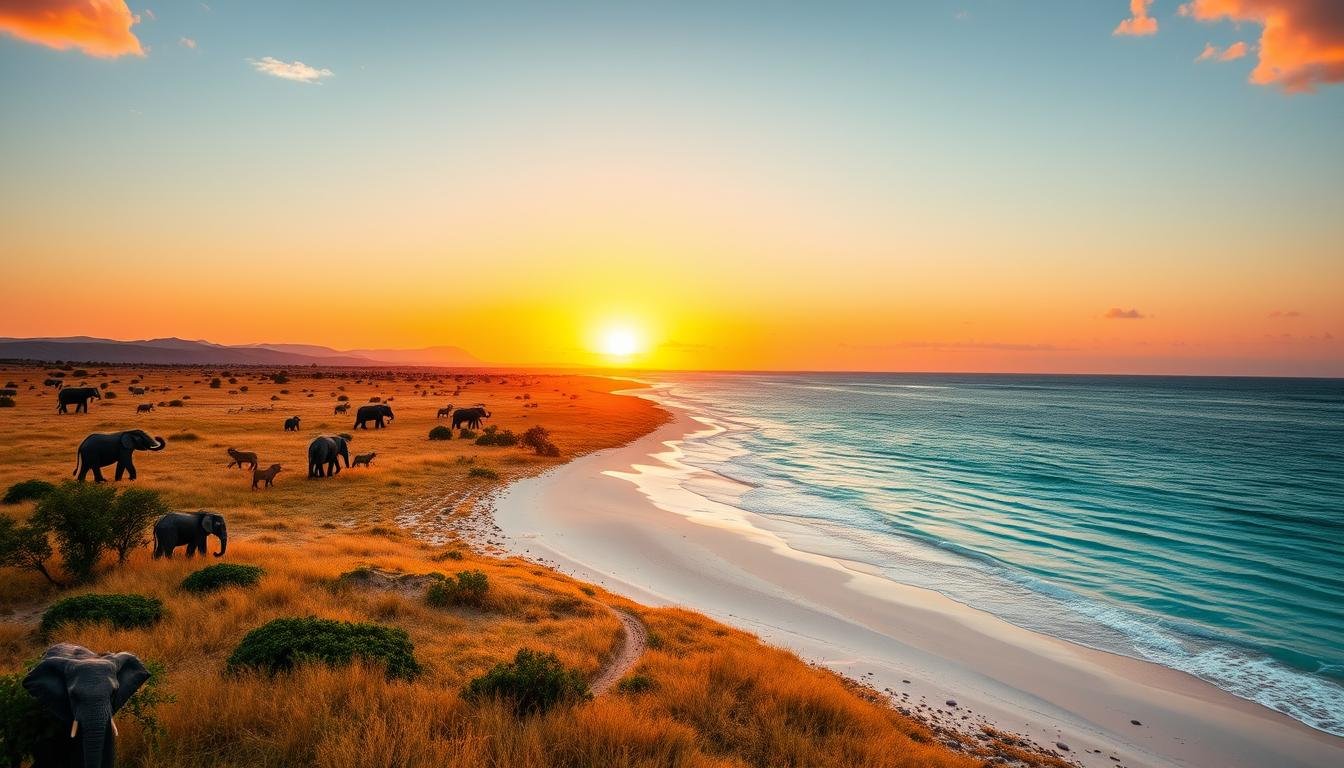
Climbing Kilimanjaro
For thrill-seekers, Tanzania is home to the iconic Mount Kilimanjaro, the highest freestanding mountain in the world. The best time to attempt a Kilimanjaro is during the dry seasons, from mid-June to mid-October and from December to mid-March16. These periods offer the most favourable weather conditions, with clear skies, mild temperatures, and lower chances of rainfall16. Climbing Kilimanjaro can be a physically demanding endeavour, so it’s essential to choose the right time of year to increase your chances of a successful summit.
The weather patterns on Mount Kilimanjaro can be extreme, with peaks swinging between intense heat and bitter cold, while lower areas are often humid and rainy. The higher parts of the mountain can even experience snow and strong winds16. Despite the generally predictable conditions, bad weather can occur at any time, including sudden storms rolling in from the Indian Ocean17.
The summit success rate on Kilimanjaro is generally low, hovering around 50-60% annually17. However, by choosing the right climbing route and dedicating sufficient time to acclimatization, the chances of reaching the top can be significantly increased17. The Lemosho Route, for example, has a 95% success rate when using the Kosovo Camp as the High Camp for ascending the mountain17.
| Best Months for Climbing Kilimanjaro | Recommended by Ian Taylor Trekking |
|---|---|
| January, February, June, July, August, September, October | February, July, August, September |
September is noted as a particularly busy time for climbing Kilimanjaro, with good weather, dry conditions, and excellent mountain views17. In contrast, climbing during the rainy seasons, particularly from March to May, is generally advised against due to the challenging conditions17.
Proper physical preparation and acclimatization are essential for a successful Kilimanjaro climb17. The duration of time spent on the mountain also significantly impacts the climbing experience, with more time translating to a better chance at reaching the summit17.
“Climbing Kilimanjaro is a thrilling challenge that offers breathtaking landscapes and the chance to conquer the highest freestanding mountain in the world.”
Bird Watching in Tanzania
Tanzania is a birdwatcher’s paradise, boasting over 1,156 confirmed bird species as of September 202118. The country is particularly renowned for its diverse avifauna, which includes both resident and migratory species. Tanzania hosts over 1,000 bird species, making it a prime destination for bird watching enthusiasts19.
The best time for birdwatching in Tanzania is during the rainy season, from November to April, when many migratory birds arrive from Europe and Asia to escape the colder northern climates18. This peak birding season is usually from December to March, during the green season when migratory birds arrive and local birds breed19. Species like the European Bee-eater, White Stork, Barn Swallow, Yellow Wagtail, Common Sandpiper, and Osprey can be observed during this period, offering a rich and varied birding experience.
Tanzania’s diverse landscapes, from the Serengeti National Park to the Udzungwa Mountains, provide excellent birding opportunities year-round, with different species highlighted in each season19. Popular birding hotspots in Tanzania include Serengeti National Park, Lake Victoria, Saadani National Park, Usambara and Udzungwa Mountains, and Nyerere National Park19.
Whether you’re a seasoned birdwatcher or a novice, Tanzania offers a wealth of avian diversity to discover. From endemic birds to raptors and colourful species, the country’s birding experiences are truly unparalleled18. While not compulsory, having a knowledgeable guide can significantly enhance the birding experience in Tanzania19.
“Tanzania is a birdwatcher’s paradise, with over 1,100 species of birds found within its borders.”
Conclusion
Tanzania is a remarkable destination that offers an unparalleled safari experience year-round20. By understanding the country’s seasonal patterns and highlights, travellers can plan the perfect Tanzania safari to suit their interests and priorities202122.,, Whether you’re seeking to witness the dramatic Wildebeest Migration, spot newborn baby animals, or enjoy favourable weather conditions, Tanzania has something to offer in every month of the year202122.,,
With this guide, you can confidently choose the best time to visit Tanzania and embark on the safari of a lifetime202122.,, From the dry season’s ideal wildlife viewing conditions to the rainy season’s budget-friendly options and thrilling baby animal encounters, Tanzania’s diverse seasonal offerings cater to a wide range of traveller preferences202122.,,
Whether you prefer to explore the iconic Serengeti, witness the Wildebeest Migration, or combine your safari with a beach getaway, Tanzania’s exceptional natural wonders and diverse wildlife await202122.,, With this comprehensive guide, you can effortlessly plan the ultimate Tanzanian safari adventure and create lifelong memories in one of Africa’s most captivating destinations.
FAQ
When is the best time for a safari in Tanzania?
What are the two distinct safari seasons in Tanzania?
When is the best time to witness the Great Wildebeest Migration in Tanzania?
When is the best time for witnessing newborn baby animals in Tanzania?
What are the best national parks to visit in Tanzania?
When is the best time to visit Tanzania and Zanzibar?
When is the best time to attempt a Kilimanjaro climb in Tanzania?
When is the best time for birdwatching in Tanzania?
Source Links
- https://www.go2africa.com/destinations/tanzania/when-to-go
- https://www.responsibletravel.com/holidays/tanzania/travel-guide/best-time-to-go
- https://www.safaribookings.com/tanzania/best-time
- https://www.brilliant-africa.com/tanzania/when-to-visit
- https://www.serengeti.com/great-migration-africa.php
- https://www.asiliaafrica.com/blog/when-to-see-the-great-migration/
- https://www.ngorongorocratertanzania.org/best-time-to-see-the-great-migration-in-tanzania/
- https://www.audleytravel.com/tanzania/best-time-to-visit
- https://www.lonelyplanet.com/articles/best-time-to-visit-tanzania
- https://onsafari.com/baby-boom-in-the-serengeti/
- https://artofsafari.travel/best-time-tanzania-safari/
- https://www.cntraveller.com/article/tanzania-safaris
- https://ellamckendrick.com/7-10-day-tanzania-safari-itinerary/
- https://www.climbkilimanjaroguide.com/tanzania-safari-and-beach/
- https://www.africanmeccasafaris.com/travel-guide/tanzania/best-time-to-go
- https://fairvoyage.com/best-season-to-climb-kilimanjaro-and-go-on-safari/
- https://iantaylortrekking.com/blog/best-months-for-climbing-kilimanjaro/
- https://africanbirdingtrips.com/tanzania-birding-safari-trips/
- https://www.tentwithaview.com/experiences/bird-watching-in-tanzania.html
- https://www.bornwild.rocks/blog2/best-time-to-safari-in-tanzania
- https://www.skyhookadventure.com/blog/best-time-for-safari-in-tanzania
- https://footslopestours.com/blog/best-time-to-visit-tanzania
